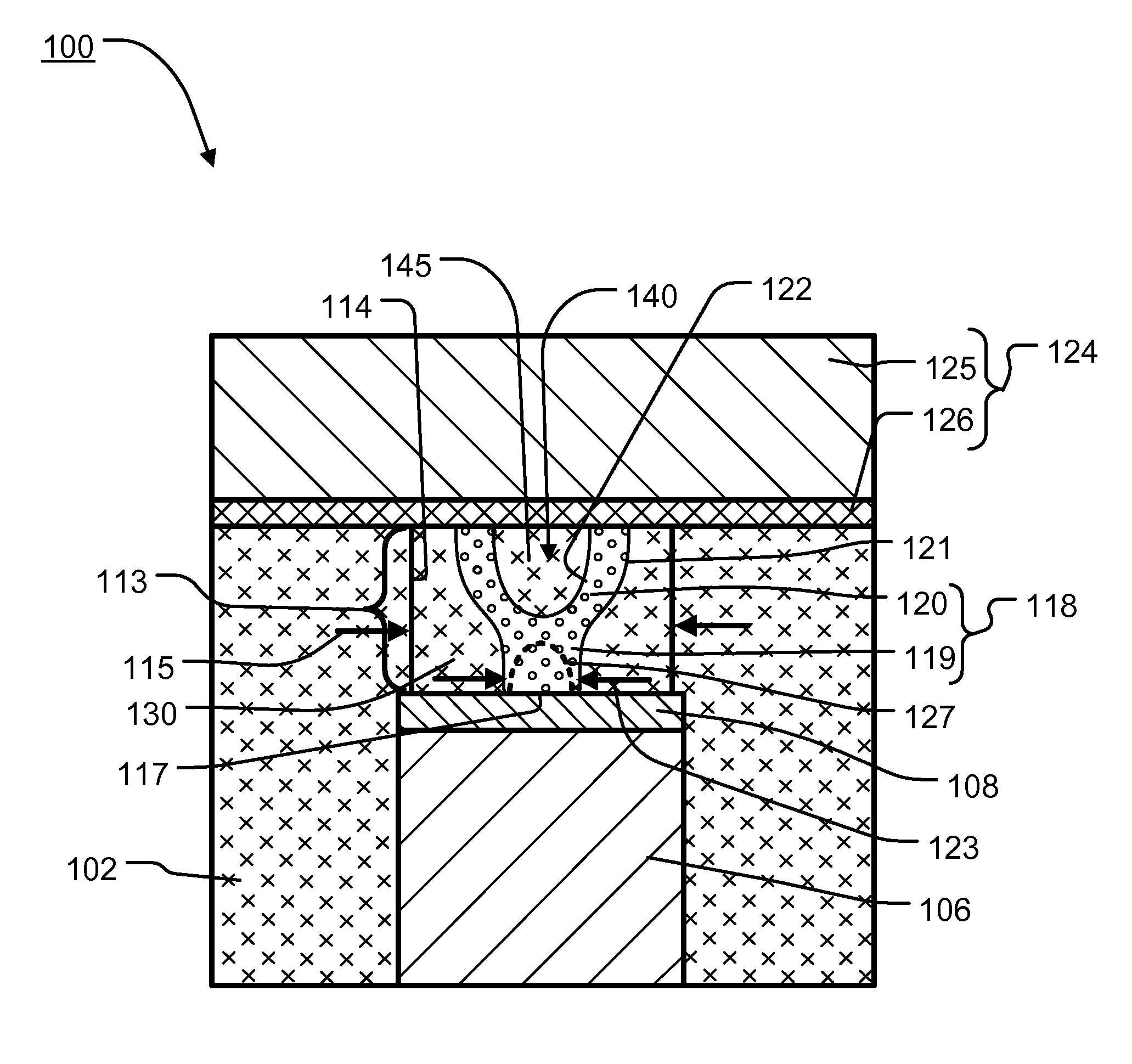Phase change memory cell with filled sidewall memory element and method for fabricating the same
a memory element and phase change technology, applied in the field can solve the problems of high density memory devices, lack of uniformity or reliability, limited cells made using standard integrated circuit manufacturing processes, etc., and achieve the effect of reducing the magnitude of current, and reducing the amount of current needed
- Summary
- Abstract
- Description
- Claims
- Application Information
AI Technical Summary
Benefits of technology
Problems solved by technology
Method used
Image
Examples
Embodiment Construction
The following detailed description is made with reference to the figures. Preferred embodiments are described to illustrate the present invention, not to limit its scope, which is defined by the claims. Those of ordinary skill in the art will recognize a variety of equivalent variations on the description that follows.
With regard to directional descriptions herein, the orientation of the drawings establish their respective frames of reference, with “up,”“down,”“left” and “right” referring to directions shown on the respective drawings. Similarly, “thickness” refers to a vertical dimension and “width” to the horizontal. These directions have no application to orientation of the circuits in operation or otherwise, as will be understood by those in the art.
FIG. 1 illustrates a cross-sectional view of a memory cell 100 having a cup-shaped memory element 118. The memory element 118 includes a stem portion 119 and a cup portion 120 on the stem portion 119.
A bottom electrode 108 contacts t...
PUM
 Login to View More
Login to View More Abstract
Description
Claims
Application Information
 Login to View More
Login to View More - R&D
- Intellectual Property
- Life Sciences
- Materials
- Tech Scout
- Unparalleled Data Quality
- Higher Quality Content
- 60% Fewer Hallucinations
Browse by: Latest US Patents, China's latest patents, Technical Efficacy Thesaurus, Application Domain, Technology Topic, Popular Technical Reports.
© 2025 PatSnap. All rights reserved.Legal|Privacy policy|Modern Slavery Act Transparency Statement|Sitemap|About US| Contact US: help@patsnap.com



